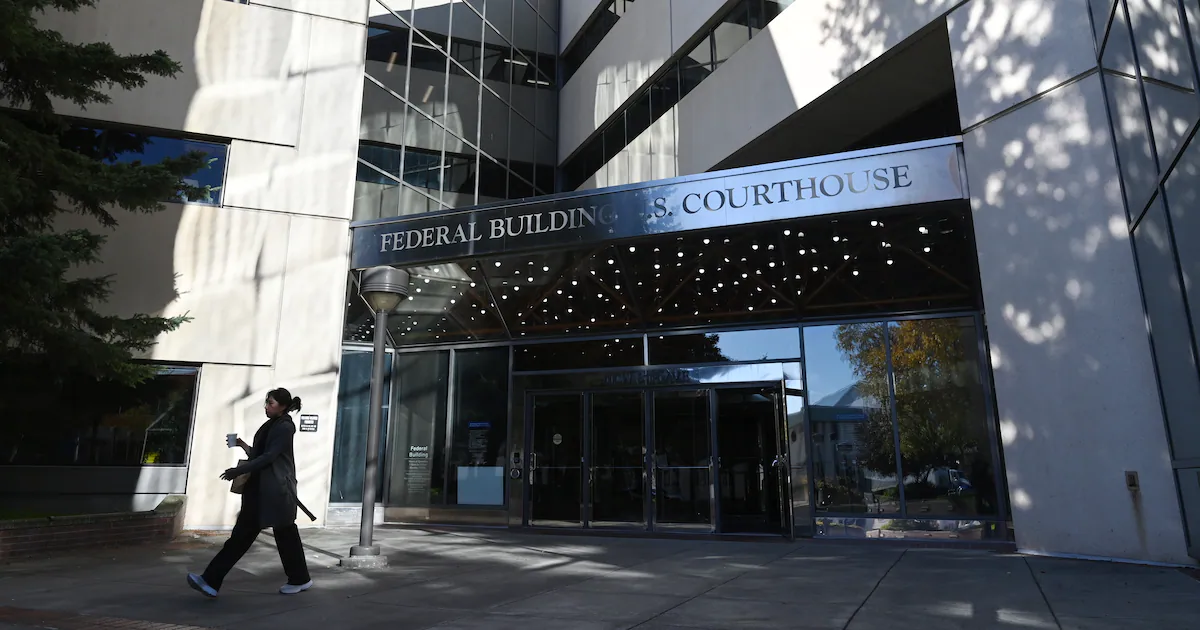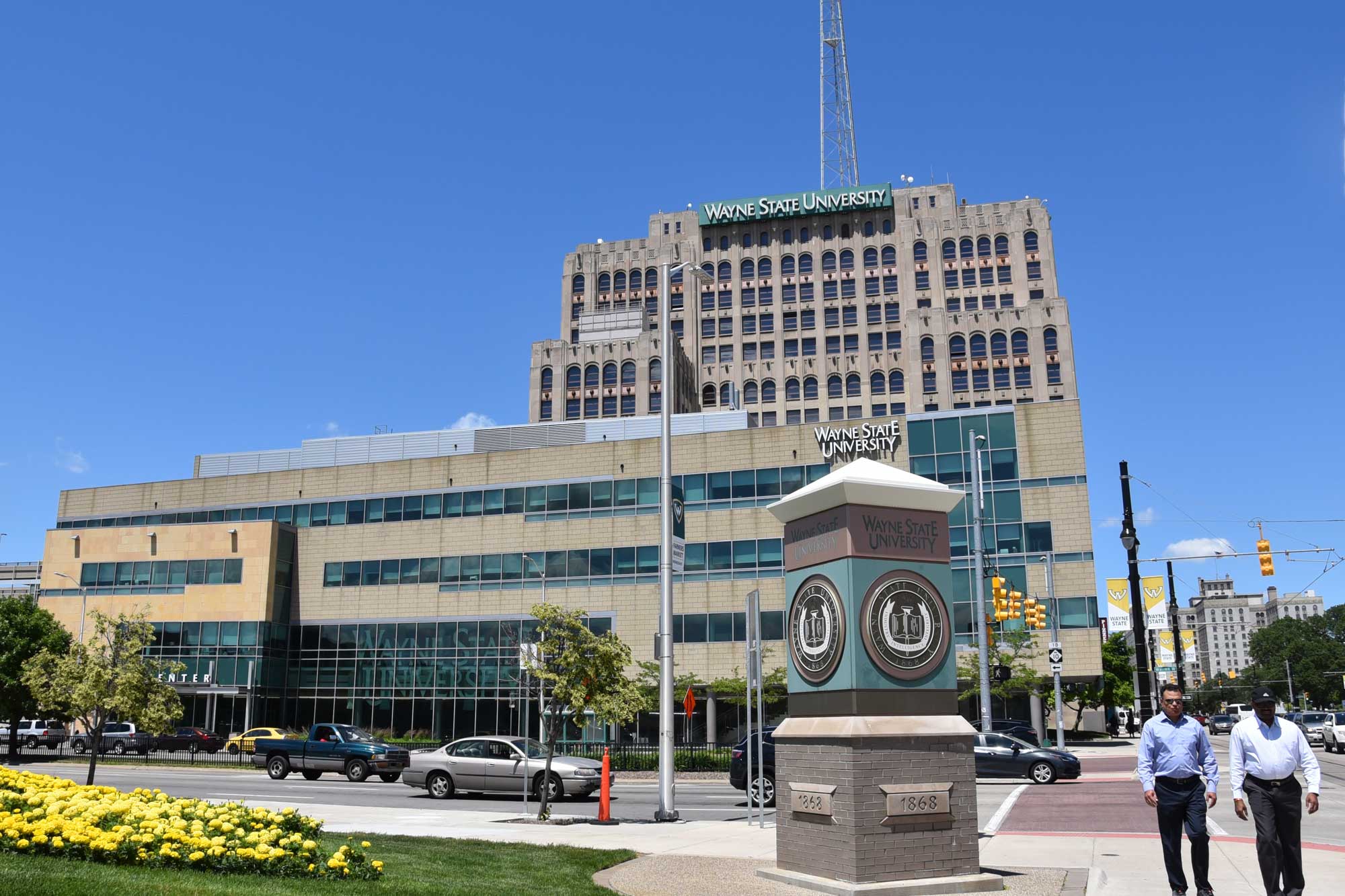
A shutdown of the federal government is on track to begin Wednesday after Congress failed to find agreement late Tuesday to continue funding operations.
Essential services — including Social Security, Medicaid, Medicare and food-stamp benefits — won’t stop while airports will continue to operate.
But the impacts in Alaska, home to a large federal workforce, could be significant.
Alaska has been through federal shutdowns before, said Dave Owens, the representative in Alaska for the American Federation of Government Employees, in an interview on Tuesday.
But this one could be different, he said.
He said it carries with it a threat from the Trump administration of widespread firings of federal workers, a large, well-paid sector in the state.
At the very least, the shutdown, if it goes on a long time, could involve a long period of nonpayment for thousands of Alaskans waiting to receive backpay once the government is running again, Owens said.
Some of those will be essential workers like air traffic controllers who will still need to work during the shutdown, while others could be furloughed employees.
Alaska is home to more than 15,000 federal employees, not counting the military personnel who are also located in Alaska in large numbers, or private contractors, he said.
Who might be furloughed — or who might be fired, if anyone — should be known as people report to work on Wednesday, he said.
The changes will come atop cuts already made to federal employees in Alaska this year through layoffs, voluntary retirement or deferred resignations.
People who show up for work Wednesday will be told to go home or stay, Owens said.
“And then what will happen is that it’ll also be, by the way, you’re furloughed or RIF-ted,” Owens said, meaning impacted by a reduction in force.
“We’ll know this week how bad it’s going to be,” he said.
U.S. Sen. Lisa Murkowski on Tuesday also said she fears the Trump administration will follow through on its threats of mass layoffs, which could harm Alaska.
“I actually think there are some in the administration who have been waiting for exactly this,” she said. “That a government shutdown gives (the Office of Management and Budget) particularly the ability, the latitude, to direct things as they will.”
“Typically, what you see in a shutdown is you have people that are deemed non-essential,” she said. “They’re not showing up, so they’re effectively furloughed, or essential ones are working and they’re not getting paid. But I think you’re going to see a reduction in force. You’re going to see termination of federal employees.”
The American Federation of Government Employees on Tuesday filed a lawsuit challenging the threat of massing firings in the event of a government shutdown, along with the American Federation of State, County and Municipal Employees.
The last federal shutdown was the longest ever. That occurred in late 2018, lasting 35 days, during the first Trump administration.
This latest dispute centers around a GOP-backed short-term funding resolution passed by the House, to continue funding at current levels through Nov. 21. Democrats balked at that proposal, seeking major changes in their resolution that included reversing nearly $1 trillion in cuts to Medicaid made in the recently passed One Big Beautiful Bill Act.
Murkowski and U.S. Sen. Dan Sullivan voted for the House resolution Tuesday night. U.S. Rep. Nick Begich previously voted for it.
What happens to federal workers’ pay?
The Congressional Budget Office on Tuesday estimated that nationwide, about 750,000 employees will be furloughed.
Still, many federal workers will be required to show up for work in a shutdown, though their pay will be delayed.
How long the shutdown will last is anyone’s guess.
Murkowski said her office will immediately post updates to a shutdown-centric page on her website. The site includes links to contingency plans for federal agencies during the shutdown, and addresses several frequently asked questions.
The Alaska Department of Labor and Workforce Development has created an FAQ webpage to address unemployment insurance questions from federal employees who may be furloughed.
Employees will be required to repay the unemployment compensation for any weeks that are covered by the backpay, the state agency says.
What federal services will continue?
The National Weather Service is “deemed essential,” and will continue to work during the shutdown, said warning coordination meteorologist Aviva Braun.
“With a recent executive order, we were reclassified as public safety and national security,” Braun said. “Everybody within the weather service is deemed essential, therefore there shouldn’t be any changes to any of our products and services.”
In an executive order in August, Trump deemed employees of the National Weather Service as having national security-related missions, which the administration contends allows the president to end collective bargaining for the agencies.
Lawsuits challenging the decision are pending.
The National Tsunami Warning Center in Palmer, which is part of the weather service, will also be conducting business as usual during a government shutdown.
“Everybody here is planning to come to work tomorrow,” said Dave Snider, the center’s director.
National Tsunami Warning Center operations will continue “status quo,” Snider said.
Planes will continue to land at airports because air traffic controllers and transportation security officers will continue working, Owens said.
Military personnel are also considered essential and will need to work with delayed pay, he said.
The Department of Veterans Affairs will continue operating during the shutdown, Owens said.
The U.S. Postal Service, an independent, self-funded agency, will also continue to operate.
Federal Medicare benefits should also continue uninterrupted, according to the Centers for Medicare and Medicaid Services.
What services will shut down?
In Alaska, past shutdowns have delayed permitting for commercial fishing boats, hobbled planning and preparation for wilderness firefighting efforts in Alaska, and led to closures or limited services at national parks, including those in Alaska.
Alaska’s public lands could also be less accessible than usual during a government shutdown.
Based on past shutdowns, the Department of the Interior, the largest non-military federal agency in Alaska, could significantly curtail operations of agencies that manage federal lands, the Bureau of Land Management, the National Park Service and the Fish and Wildlife Service.
Among the impacts, national parks, refuges and other public lands could be closed and access to campgrounds and public-use cabins on federal lands could be impeded, Owens said.
How will the shutdown affect Alaska’s economy?
Neal Fried, a former longtime economist for the state of Alaska, said the federal government — in part through paychecks to employees, grants to contractors, and payments into the Alaska Native health care system — is probably the single biggest part of the state economy.
Still, past shutdowns haven’t had a big impact on the state’s economy, in part because furloughed and essential employees are paid once the shutdown ends, he said.
But this time could be different, particularly if federal workers in many cases are fired rather than furloughed, he said.
A longer-than-normal shutdown could also add to the impact, with private contractors going unpaid, often without reimbursement, and other services on hold, he said.
A shutdown this time will also come atop a period of uncertainty in Alaska because of the Trump administration’s previous efforts this year to downsize the federal government through layoffs, early retirements and deferred resignations, he said.
Hundreds of millions of dollars in federal grants that Alaska communities and entities have counted on have also been canceled while Trump’s tariffs imposed on other countries have added to the questions hanging over the economy.
“It’s really hard to predict what will happen,” Fried said.
How will state-administered services be affected?
The state government of Alaska is heavily dependent on federal funding. The feds pumped about $6 billion into the state in fiscal year 2024, representing close to 40% of the state budget.
The office of Gov. Mike Dunleavy said in a statement that Alaska will “continue essential services and minimize disruptions to Alaskans in the event of a federal government shutdown.”
Medicaid, Title IV-E Foster Care and Adoption Assistance and other key programs are expected to continue during a shutdown because of their existing authorizations or funding streams, the statement said.
Benefits such as low-income food assistance that are funded federally but administered by the state should continue as normal — at least in the immediate future, according to Dunleavy’s office.
The state of Alaska “can continue SNAP benefits with existing funding through the month of October,” said Jeff Turner, a spokesman for Dunleavy.
Funding to continue WIC, the Women, Infants and Children program for low-income mothers and their young children, would last “through the first week of the month,” Turner wrote in an email.
Alaska’s SNAP food assistance program has been beset by persistent backlogs for years, with monthslong waiting times.
“The Governor’s office and the Alaska Department of Health are waiting for a contingency plan from the United States Department of Agriculture that will inform all 50 states how to proceed with both programs during the shutdown,” Turner wrote. “It will be reviewed expeditiously once it is released to understand how best to move forward.”
“If a shutdown were to continue beyond a month or if funding conditions change, Alaska will reassess and prioritize programs that most directly impact the life, health, and safety of Alaskans,” the statement from the governor’s office said.
How is Alaska’s congressional delegation reacting?
Alaska’s senators on Tuesday voted to approve the House funding resolution.
They said they will be working with Republicans and their Democratic counterparts to try to find a resolution to the shutdown as quickly as possible.
Sullivan said he’s heard from Democrats who want to support the House resolution but have been reluctant to break party lines.
“Bipartisan members of the House and Senate are united,” Sullivan said in a statement. “We want to pass a clean (funding resolution) and then spend the next seven weeks negotiating on in good faith other items, like extending and reforming the Affordable Care Act enhanced premium tax credits, which I support.”
Murkowski said in a statement late Tuesday that she supported the House funding resolution, after previously voting against it, to provide the Senate with time to work on appropriations bills.
“There is no such thing as a good government shutdown, and it is imperative that we come together to put a quick end to this one,” she said in the statement.
Murkowski said her office is ready to help Alaskans who may be affected by the shutdown.
She said to keep government open, she had proposed a plan that included accepting the House resolution with additions that include extending Affordable Care Act tax credits to help millions of Americans avoid increases in their health insurance costs and restoring some funding for rural public broadcasting stations.
“I realize that the framework I put forward 10 days ago reflects my priorities, and others might have different ideas on how to reopen the government,” she said. “I am willing to talk with any of my colleagues, and welcome good-faith negotiations to make this shutdown as short and painless as possible for the American people.”
Begich said the shutdown “was entirely avoidable,” according to a statement from his office.
“House Republicans passed a clean, nonpartisan continuing resolution to keep the government open and provide certainty for Alaskan families, seniors, and veterans while we work toward completing the appropriations process,” he said.
“I remain committed to ending this shutdown and working toward a return to regular order in Congress,” he said.



